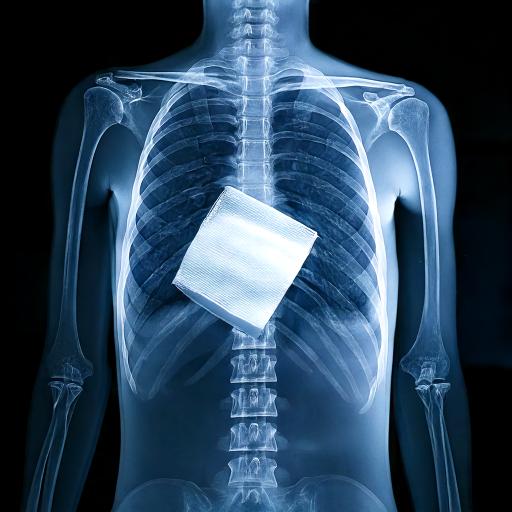Low-Cost Detection of Retained Surgical Items Before Closure
Description
This technology is an innovative platform to detect surgical items retained in the human body, including sponges, gauzes, cottonoids, scalpels, needles, and others. Surgical items retained in the body create a variety of health, legal and monetary consequences. For the patient, the result can be infection, blood poisoning, organ failure or even death. The most commonly retained surgical item is a whole or partial surgical sponge. Current procedures primarily consist of manual counting during surgical closure followed by x-ray if there is a discrepancy. The increasing number of global surgeries and the high cost of retained surgical items ($300,000 - $1,000,000 each), along with regulatory and legal concerns, are driving the market toward technological advancements in this area.
The technology utilizes off-the-shelf, inexpensive, FDA-approved fluorescent compounds (like indocyanine green) and near-infrared (NIR) fluorescence, so that retained surgical items are easily differentiated against the body’s natural biomolecules when viewed with an NIR detector. In turn, the platform facilitates better tracking of tools, reducing the risk of retaining foreign objects, and improving overall procedural accuracy. The technology also avoids the need for finding items via X-rays, which can miss items obscured by bones, high body mass index and other comorbidities. In vivo experiments show that the surgical items treated with the NIR dyes were successfully detected in the animal model using this platform.
 Benefits Benefits
- Enhanced Safety and Risk Reduction: significantly reduces the risk of leaving surgical items inside patients before closing the surgical field, and uses FDA-approved compounds with high safety profiles
- Time Efficiency: by providing real-time visibility of surgical instruments and articles, ensures quick and accurate detection
- Cost-Effectiveness: the FDA-approved dyes can be detected by using a simple low-cost imaging detector that projects the image onto a computer monitor where the surgeon can check for RSI by a simple glance.
- Wide Range of Adaptable Tools: adaptable to various surgical articles, including laparotomy pads, gauze, sponges, sutures, forceps, clips, scalpels, and more. It can be used across a broad spectrum of surgeries, including general, orthopedic, and minimally invasive procedures.
Applications
- Broad spectrum of surgeries, including general, orthopedic, and minimally invasive procedures
- Medical imaging
Patent Information:
| Title |
App Type |
Country |
Serial No. |
Patent No. |
File Date |
Issued Date |
Expire Date |
Patent Status |
|
|
|
Inventors:
Keywords:
|